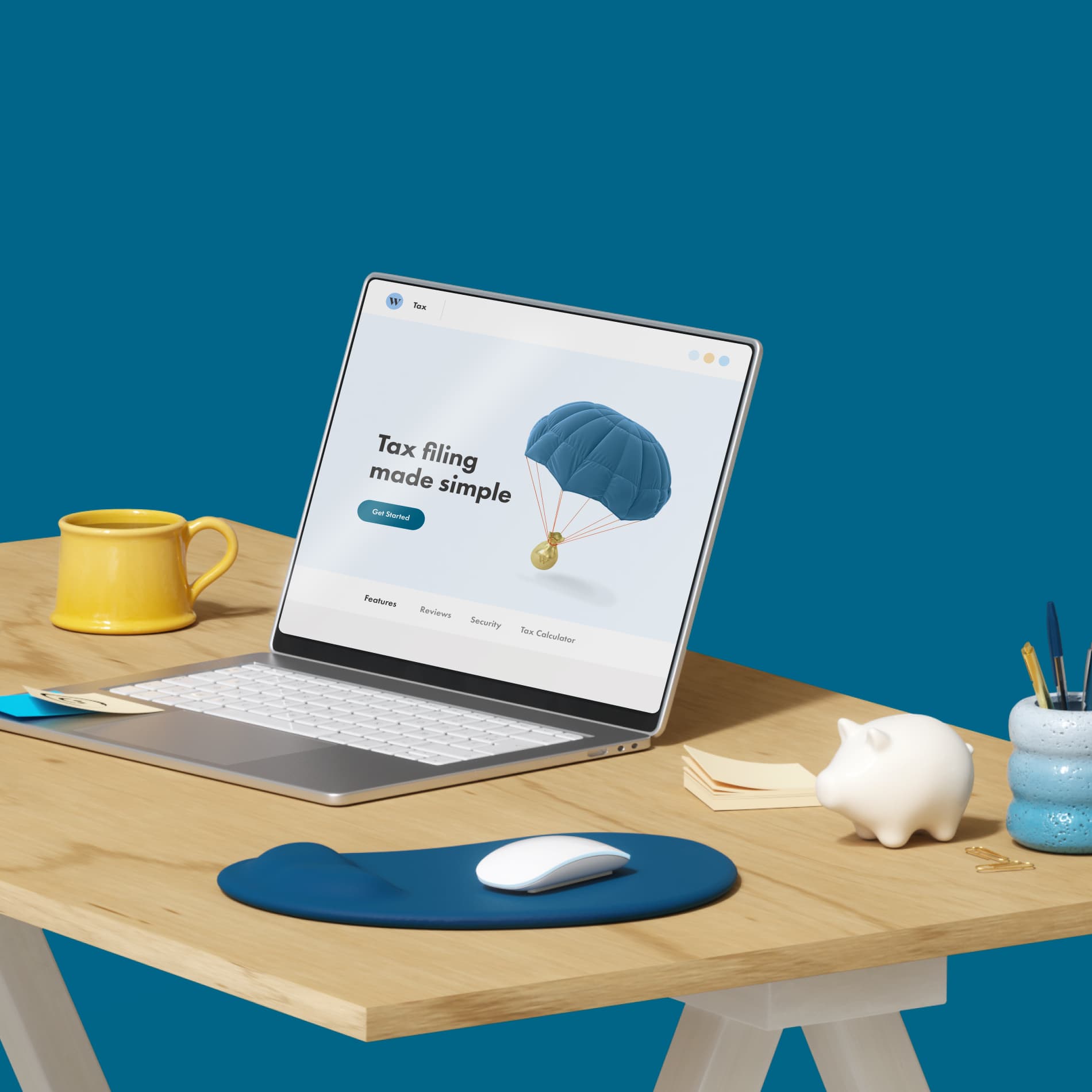
Finance for Humans
How to Get Financially Ready to Have a Kid and Still Feel Joy
Nothing brings you into the world of financial grown-up-ness quicker than finding out you or your spouse is pregnant. Relax, take these simple steps, and feel like the parent you hope to become.
Wealthsimple makes powerful financial tools to help you grow and manage your money. Learn more
From the moment they are born, children are Kryptonite to financial practicality. They’re little money vampires, kids. Just the other day, my five-year-old son Charlie dumped an entire glass of lemonade on the keyboard of my wife’s Macbook. Did we ship him to an orphanage? We did not. Because when it comes down to it, Charlie could gamble away our retirement savings, burn down our house, or roll the minivan off of a cliff, and we’d still be scouring the house to find a loonie to buy him an ice cream. Which is to say that children don’t always bring out our most financially efficient selves. So before your bundle of joy arrives (and the hecticness of your life increases 7,000%), it’s time to do a few simple things to make sure you’re getting ready the right way.
If you do only one thing: Open an RESP and use a few tricks to make sure you’re getting enough money into it.
There are lots of ways to plan for your new family’s future. But begin with the no-brainer. Whatever you do, start a registered education savings plan (RESP). It’s the best deal the government has to offer new (or not new!) parents. If you want to read more about it, we have a simple guide. But in the meantime, here’s a quick primer on how it works: Over the years, you deposit up to $50,000 into an account earmarked for baby’s university education. And there it grows, tax-free (first financial bonus). When you open your RESP, your provider will give you the paperwork to enroll in the Canada Education Savings Grant (CESG). After that, the government will automatically match 20% of any of your contributions up to $2,500 a year (the second, bigger financial bonus). We’ve got a calculator: That’s 500 free dollars annually, and it’ll keep matching every year until it maxes out at $7,200 per kid.
We talked to Robin Taub, a financial literacy consultant, accountant, author, and mother of two kids aged 19 and 21, and she said that whatever you do, try to take advantage of this. “Twenty percent is a great return on any investment,” she says. “A lot of people don’t take advantage of it, which is surprising, because it’s like turning down free money.”
Once you’ve made it through the perils of childhood and your kid is enrolled in a “qualified educational institution” (university, community college, what have you), he or she can spend the money from that account on tuition, books, housing, or even beer and pizza (the CRA doesn’t ask for receipts, but you might).

Sign up for our weekly non-boring newsletter about money, markets, and more.
By providing your email, you are consenting to receive communications from Wealthsimple Media Inc. Visit our Privacy Policy for more info, or contact us at privacy@wealthsimple.com or 80 Spadina Ave., Toronto, ON.
One of the cardinal rules of taking care of Future You is: Whatever you do, try to scrape together the $2,500 you need to invest to get that free $500 yearly (the maximum per year the government will match). And if you can’t come up with it yourself, a contribution is a great gift from grandparents, many of whom are great at spoiling kids, but not the best at choosing things that children want or need.
Make sure your RESPs are making as much money for you as possible.
Of course, how your RESP money is invested is also pretty important. All banks offer these types of accounts. You won’t be surprised to learn that we think Wealthsimple is the best place to have yours—the lowest possible fees, the best possible ETFs, great customer service from nice people. You know our spiel. But once your money’s invested at a place like Wealthsimple, you’re going to have to decide how much risk you can tolerate. Mike Allen—a Wealthsimple advisor whose daughter Hailey was born 14 months ago to him and his wife, Erin, who also works in finance—opened a Wealthsimple account for his daughter. He and his wife invested 90% of it in equities, the volatility of which he believes is offset by the regularity of their contributions. “I have Hailey’s money in our highest risk score, 10—the most aggressive portfolio,” Mike tells us. “We’re very comfortable with volatility. Since $3,000 will be deposited into that account every year, if there are market fluctuations, it just means that some years we’ll be picking up equities at cheaper prices.” As the date she’ll need it grows near, Allen plans to gradually decrease the portfolio’s risk tolerance by shifting it to other investments.
Don’t deal with your baby-anticipation anxiety by buying, buying, buying.
And as exciting as the prospect of the new baby may be, there will be a tendency to overspend in anticipation of the arrival. “Every other day for about six months, I’d come home and to find a new box from Amazon in the driveway,” Allen says. “We ended up with twice as many clothes as we needed. In retrospect, I wish we’d gotten all hand-me-downs. No one looks at a baby picture and wonders whether the sweater is brand-new or not.”
The Allens also plunked down $1,300 for a new Bugaboo Cameleon stroller; their neighbors bought a seven-year-old secondhand Bugaboo for $200 and spent another $100 rehabbing it at Stroller Spa. Allen feels like a chump. “There’s virtually no difference,” he admits now. “You really don’t need a top-of-the-line stroller.”
So, unless you like to melt loonies to entertain yourself, don’t buy the $500 Dolce & Gabbana cowboy-themed onesie. Disabuse your friends of the idea that you hope to dress your baby like Victoria and David Beckham’s kids: Baby showers should instead be mercilessly practical affairs. Set up an Amazon or Buy Buy Baby registry for the pricey things you actually need: a Diaper Genie, a car seat, a changing table. What you don’t get, steal from friends. “There’s just so much paraphernalia—there’s absolutely no reason you can’t borrow this stuff from friends or older siblings,” says Taub, the grown-up financial tutor. “Someone’s always looking to get rid of that stuff.”
Don't let companies prey on your baby ignorance.
There is an entire industry devoted to preying upon the fears of new parents—especially your fears that the world isn’t safe for your new child. Safety is important, but it doesn’t have to be expensive. “I remember everyone I knew paid to babyproof their house,” says Taub. “This company would charge you about a thousand bucks to come into your house and put latches on the toilets and pads on any sharp corners, all stuff you could do yourself. All that stuff is a cost that can be avoided.” The data simply doesn’t justify the fearmongering. More than 375,000 kids are born in Canada annually, and only about 30 die from accidental injuries. Obviously, you will do everything in your power to avoid becoming part of that statistic, but common sense and readily available articles, like this one, demonstrate that even the least handy-with-a-hammer mom or dad will be able handle the steps required to babyproof a home on the cheap.
You're a lot more likely to croak than your baby.
Apologies, bit of a downer, but before you’re taken over by the unadulterated life-affirming joy that you will experience upon the birth of your first child, try to imagine what your spouse is going to be up against financially raising baby alone if you keel over dead on the treadmill. Please: Consider life insurance. Allen did. “The rule of thumb is that your family should be covered for 5 to 10 years of your income,” he says. “I would want Hailey and Erin to have ten years of my salary, plus the outstanding mortgage balance on the house.” Both he and his wife bought 10-year-term life policies that include an option of extending them to 20 years. Each policy costs $700 a year, and should tragedy strike on one of the Allens, the survivor will collect $2,000,000.
And of course, for goodness’ sake, draft a will.
Buy the house you’re going to want to live in for a long time—even in some future when you might have more kids.
In 2008, when my wife became pregnant with our son Henry, I hatched a brilliant plan to buy an apartment for our family. We picked up a cute little two bedroom, two-bath condo in a good school district in the city that would be perfect for our planned family of three for a decade to come. Two years later, Charlie came, and our family of three was now a cramped family of four. Whoops! As they grew, we decided that Henry and Charlie were likely to kick each other all night if we continued to force them to share a bed. We decided to make a break for the suburbs. We got lucky. We benefited from a rising housing market, and after all the associated costs of the sale, we just broke even on the sale of the place we had bought only three years earlier. If we’d tried a similar trick in 2008, we would have taken a huge financial hit or even found ourselves stranded in an uncomfortable apartment that we couldn’t unload.
“There’s a trend in Toronto of a lot of young people having babies in condos downtown, but then, I think, after doing it for a while, they may change their minds and decide maybe they don’t want to be downtown after all and want some more space,” says Taub. Put some thought into what Zillow has dubbed the “breakeven horizon,” the period of time before which it makes more financial sense to rent than buy, a number that varies greatly by city. Ask around: Any veteran, honest real-estate broker in your town will know.
According to Taub, “it’s incredibly expensive to move. People often forget the huge transactional costs of buying and selling. There are broker commissions, legal fees, moving costs, land-transfer tax, and the list goes on.” Finally, any couple suspecting that they may want to start a family within five years should investigate carefully the neighborhood in which they plan to buy. “Your baby is eventually going to go to school,” says Taub. “Depending on your district or catchment area, the school might be great, but if the school’s mediocre, you may want to consider private school, although it does cost a fortune."
Decide how much time you want to, and can afford to, take off after the birth of your child.
During maternity leave, employment insurance provides mothers with 40% of their income, up to $50,000, for as many as 15 months. Many companies top off that amount, bringing benefits almost on par with lost income. “A huge factor when you’re financially planning for a kid is finding out whether your company tops your salary,” says Taub. Find out early. Once a mom (or dad—many companies provide for some paternity leave as well) knows how much she’s going to be collecting, she can make the decision about whether, and for how long, she can afford to stay home. Your family may even decide that it makes more financial sense for one parent to ditch the workforce altogether post paid mat leave. “If you have a high-earning professional career, obviously it’s going to make sense to go back to work, but for some families, the cost of childcare means going back to work may not make sense,” Taub says.
One way to know what makes sense for you is to shop for childcare options before the baby comes. “The biggest surprise for us was the price of day care,” Allen says. “The day cares we looked at initially were $1,800 to $2,000 a month, which is insane.” The Allens settled on a home-based day care that costs them $900 a month, and Erin went back to work after one year.
And of course, we believe the best thing you can do to plan for your financial future (with or without the kids) is to open an account at Wealthsimple. What are you waiting for? Get started!
Wealthsimple's education team is made up of writers and financial experts dedicated to making the world of finance easy to understand and not-at-all boring to read.









